Medical laboratory workshop Episode 6: Baby's death due to negligence by parents
Today's episode of our workshop is quite disheartening. Sometimes some parents make costly mistakes when it concerns the health and wellbeing of their children. Children especially infants are unable to properly express themselves and how they feel. The only way they can broadly express any discomfort is to cry. Now as parents, it is left for you to actually find out what the real problem is and the solution.
Our discussion today will be narrative by style after which we then go deeper to understand the real cause of the baby's death through diagnostic testing and medical examination. This will be a long but interesting read. The results and findings will help us understand better why we need to ensure we visit the hospital as soon as possible in case of any illness. Without wasting much time, let's get on with it.
The right thing to do as soon as you notice an abnormality or any changes in your child's health status is to seek for medical attention by visiting the hospital. The health of children, especially those below the age 5 must never be joked with because at this young age, they are still adapting to various environmental influences and factors that threaten their existence.
Their immunity is not yet strong enough to overcome a lot of pathogens that could causes diseases, hence why they are at an early stage vaccinated against some viruses. This will help confer some level of immunity against the pathogens.
How traditional practice has influenced a lot of individuals negatively
Some time ago, I wrote about how we lost a patient due to false traditional practices by the community members of the town where I am currently working and how the barbaric practices have cost them a lot of lives including those of their children. You can read the post here - Lost a patient due to shady practices -A case narrative.
One of the greatest threats to strict adherence to health regulations and policies in Nigeria is beliefs. Nigeria is a country with diverse ethnic groups that have different beliefs. Where I am currently (the South-South geopolitical zone) aka the Ijaw, the well-known common practice here is Massage. They naturally believe that massaging any disease-affected area of the body can bring healing.
Self-prescription of drugs is a common practice here and to make matter worse, they generally do not visit the hospital until things get out of hand or when the situation has gotten so bad that it becomes extremely difficult to be salvaged by the medical professionals in the
hospital. Since I resumed in the facility where I work, we have lost a total of 4 babies (today's own inclusive), all attributed to self-treatment by unqualified so-called 'Chemist' in the community.
Rather than visit the hospital, they would preferably ignorantly visit the 'chemist' for drug prescription. They fail to understand the importance of diagnosis before treatment and drug administration. All things being equal, the very first thing that must be done in cases of uncertainty about the nature of a disease condition is to do diagnostic testing and one of which is laboratory analysis.
The results from the test help guide the physician on what to do next, as well as the choice of drugs to be recommended. Without this basic step, in most cases, the treatment is always guesswork. Sometimes, it works, while sometimes, this wrong practice can lead to complications that can cost the life of the patient.
Why people in most cases are adamant rather than change their mindset about their beliefs
Research has shown that humans naturally find it difficult to accept change because of some myriads of reasons. I will be using the Health Belief model to explain this properly. After reading, you will probably get to understand why it is quite difficult to achieve a hundred percent compliance from community members about some of their practices that are affecting them negatively but they chose to pay deaf ears to instructions.
Have you ever wondered why Smokers, despite the fact that the label clearly states that "smokers are liable to die young" still smoke? What really could be the cause of this aside from one of the content - Tobacco which has been reported to cause addiction? Is it just all about addiction or is there more to it? People can be aware of something yet, they are still not willing to change, and you begin to wonder, why is that? These are some pertinent questions that need answers.
Knowledge of something is necessary, but it is not enough. The health belief model tried to answer this question by letting us understand the human mindset towards change and how we can best apply them in different scenarios. According to the Transtheoretical stages of change model as described by Prochaska and DiClemente in 1983, there are 5 stages of behavioural change in people.
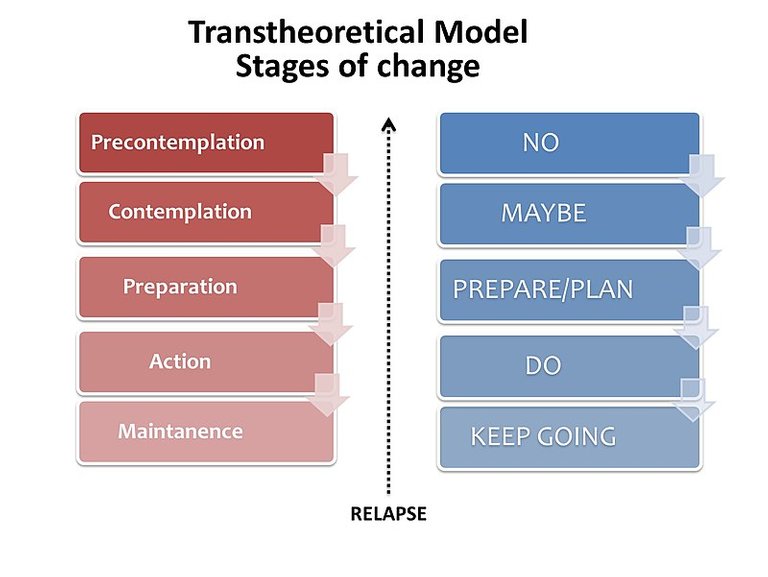
These stages include the pre-contemplation (here, they do not have any intention of changing or they are not even aware of the need to change), contemplation (Now they are aware and still trying to decide what to do next), preparation (at this stage, they have decided on what to do and then now seeking to know how to change for the better by asking questions), action (They finally know what to do and then they take action) and lastly maintenance (They at this point try to maintain that change for a long time, at least 6 months).
If we can understand this model and apply it through awareness campaigns, the chances of getting a positive result are sure on the high side in the community. In a nutshell, it is not all about talk, the need to always be available and render help and assistance to these people is very important. One who is already in the preparation stage would need a very good mentor and advice in order to successfully enter the action and finally the maintenance stage of change. If such is absent, the efforts become futile.
The health belief model on its part helps to get these individuals to take further action about their health or that of their children. The model on its own has about 6 constructs. The first is Perceived Susceptibility (Here, it addresses what the state of the individual is or the Belief about getting a disease or condition). Do they really think they are susceptible and are they at risk of getting infected? When they do not understand the implication of their belief, they hardly would want to key in or make adjustments to their lifestyle.
The second is Perceived Severity. This construct focuses on the severity and the immediate or future consequences of the disease or condition should they decide not to heed instructions about prevention. Their belief about the consequences of delay in getting treated will help make them take decisions as fast as possible. In essence, it still boils down to educating these people on the need to weigh the consequences of their actions.
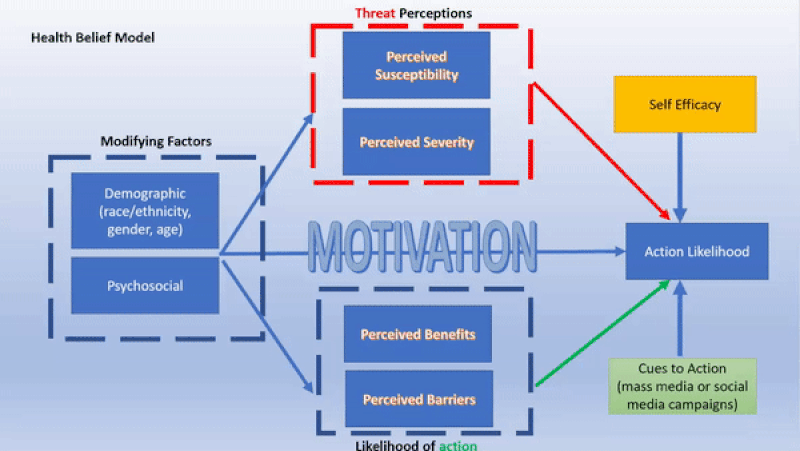
Going to that chemist who is not a licensed medical practitioner, is safe? Is the mother ready to risk the life of her child knowing full well about the consequences (complications or death of the child) of such? It is easier for someone who has HIV to accept taking antiretroviral drugs than someone with Syphilis (A disease caused by the bacteria Treponema pallidum) considering the fact that HIV is deadlier than syphilis.
The third is Perceived Benefits. This focuses on the potential benefits associated with their decision. Parents who decide not to go to the 'Chemist' but rather do the right thing by going to the hospital, are sure their child will be properly examined before treatment. Since they understand the benefits of what they are doing and they see clearly that their action is in the interest of their ward, they will be willing to change their belief.
The fourth and fifth constructs are Perceived Barriers and benefits. In this case, it focuses on the obstacle they may see as a hindrance to them taking full action. It is easier for health decisions to be taken by couples who have like minds and opinions than when they have divergent ones. The reward should outweigh the risk, if not, the chances of changing belief become extremely difficult. Belief about the potential negative aspects of a particular health action.
The last two are Cues to Action (things that trigger the individual to take actions) and Self-Efficacy (Self-esteem and confidence in oneself about taking the action boldly).
Now when we marry the above theories - the health belief model as proposed in the 1950s by Hochbaum, Rosenstock, and colleagues and Transtheoretical stages of change model, we would be able to actually have a better understanding of why these community members actually may or may not change their beliefs in the nearest future.
It takes a greater effort on the part of us as health professionals to convince and make these people see the reasons why they need to change their beliefs about certain things, especially when it pertains to health.
Clinical Investigation Done on baby and findings
Some of the commonest infection children around here come down with is bacteria infection (Salmonella typhi aka typhoid) and plasmodium parasite infection. It is not surprising because thus region is a riverine area. The safety of the water drink and consume cannot be guaranteed. Further more, areas where you have water abundance is a natural habitat and a breeding ground for mosquitoes which are the agents and vectors for the parasite - Plasmodium that causes malaria disease in humans.
The baby that was brought into the facility was already in a very critical situation. Just like I earlier explained, the hospital is usually the last point of call for indigenes of the community in the region where I am currently, instead of being the first. They prefer to try out their traditional practices and beliefs hoping to solve the health challenges their children are facing. In most cases, It is only when their approach fails that they resort to seek medical attention at the hospital.
When they arrived the hospital facility, mere looking at the child, I shook my head in disappointment because, from my observation, the chances of the child surviving was already very slim. If they had come earlier before the time they came, things might be a little different for the better. You might be wondering why, read along, you will understand better.
In infections, be it parasitic or bacteria infection, you would always expect an elevation in number of white blood cells (responsible for fighting off infections). These cells naturally would respond with the sole aim of restoring normalcy in the body system. In situations where you have an excessive increase in the number of circulation white blood cells, this is called Luekocytosis. They increase in number so that they can in unison handle any challenge in the body system.
When infections overwhelm the body immune system up to the point where the body white blood cells can no longer fight back, they begin to destroy vital cells and organs up to a point where recovery might seem very difficult. When these infection is detected on time and appropriate treatment using drug are administered, the damage will be minimal and easily handled.
There are different methods and technology used in estimating the amount of these cells in the blood. The use of blood cell counting machines have so far helped in making it easier for these cells to be accurately counted. Due to poor funding, some of these machines are not available here. Nevertheless, we make do with what we have and that is the use of crude method involving the use of An improved Neubauer counting chamber to count the number of the white cells.
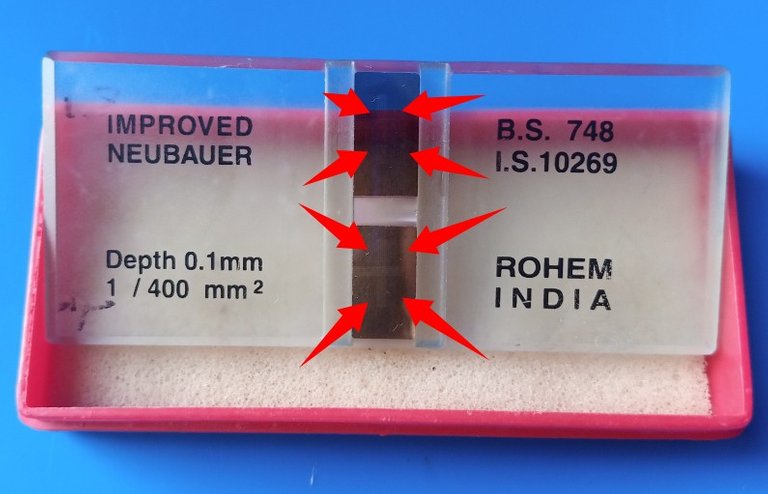
The counting chambers are quadrants specifically for counting the white blood cells. To prepare a sample ready for quantitation, you make a 1:20 dilutions of the blood sample (i.e 20uml of the patient's blood as against 380uml of Turk's solution).
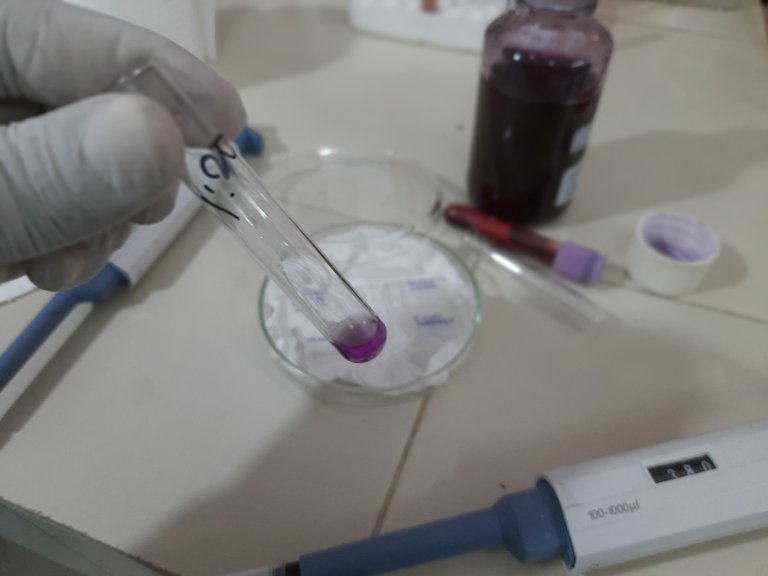
Diluting blood for total leukocyte count in Turk's fluid
The principle behind the use of the Turk's solution is pretty simple and it mainly functions to lyse other components of the blood while staining and leaving only the white blood cells for counting.
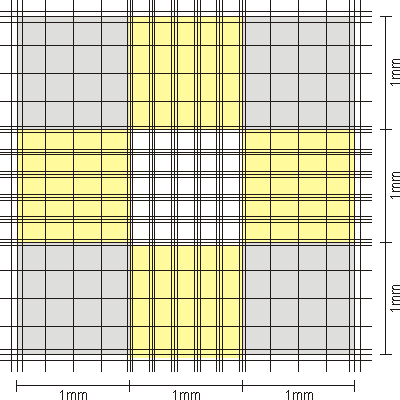
After preparing the dilution, you mix it thoroughly to ensure complete lysis of other cells. The next thing you do, is to clean the counting chamber with a moist cotton wool. Get a clean cover slip and place it over the counting region and then charge it by applying little pressure while sliding coverslip against the counting chamber until a newton ring (looks like a rainbow) is formed.
The formation of a newton ring, is a confirmation of a charged Neubauer chamber. You can double confirm this by over turning the chamber, you would observe that the coverslip you had initially placed on it won't fall off. After the confirmation, the next thing you do is to mix the dilution again and then use a Pasteur pipette to place drops of the dilution at the edge of the junction between the coverslip and the Neubauer chamber. You would observe that, as you place the drops, they by capillary action move down to cover the entire upper or lower 4 quadrants (depending on which side you decide to use).
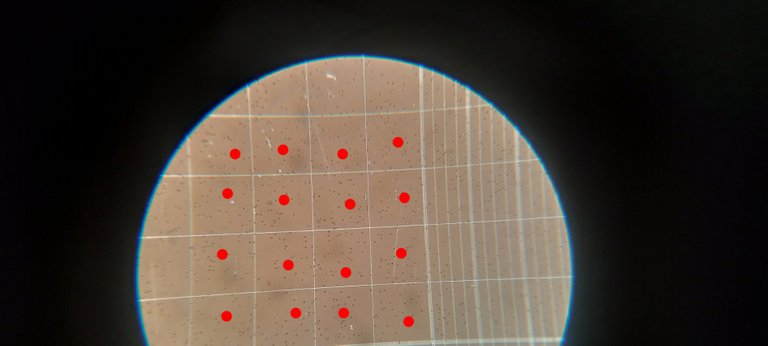
Allow for at most 5 minutes to allow the cells settle before you do the cell counting. Set your microscope and either use X10 or X40 objective lens for counting. For ease, X10 objective less is my favourite. Going further to X40 will give a higher magnification and also show the exact type of white cell which we are not actually interested in at the moment. Doing a differential count using a stained film is more preferable in identification of the exact type of white blood cells.
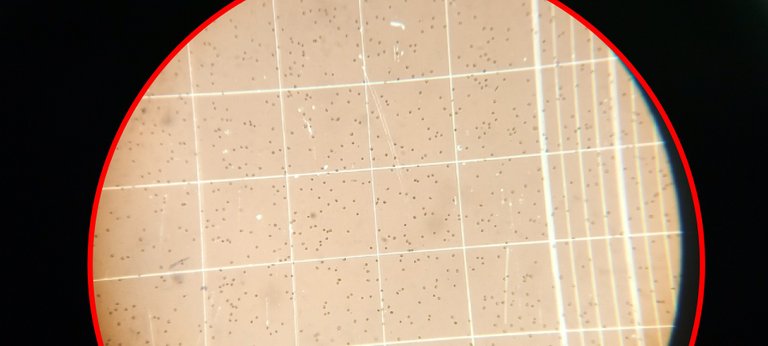
Observe closely in the squares, you will see tiny black dots, those are the white blood cells. The sample above is that of the baby, and from all indications, she has leukocytosis. This is a clear indication of an infection. After counting the cells, the result gotten was 72.9x109/L of cells. When you compare this value with the the normal reference values for apparently healthy individuals (4-11x109/L), you would see that it is way out of range and on the upper limit.
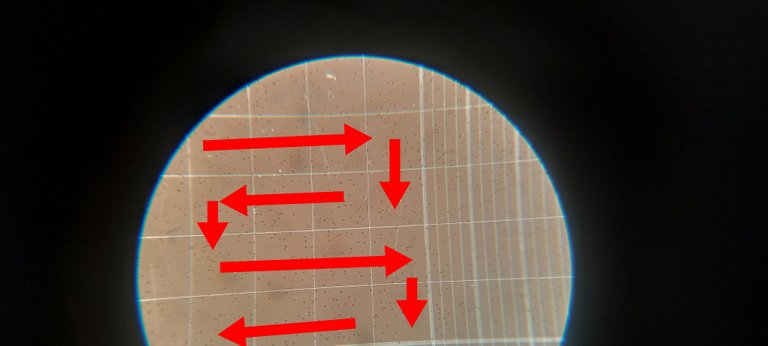
Depending on your preference, you may choose to start from any where but make sure you count all dots that falls within the small squares.
Going further with diagnosis, Malaria and WIDAL test was also done to ascertain the infection status of the child. The WIDAL result came out positive with a very high significant titer of 1/320. This also agrees with the results of the white blood cell count and double confirms an active infection. Furthermore, the malaria parasite test read 2+, which also could be the cause of the fever experienced by the child besides the infection.
From the estimation of the baby's packed cell volume (PCV) when they first arrived, we got a value of 9% (a very low value almost not compatible with life). At this point, the first point of call was blood transfusion to at least stabilize the baby. Unfortunately before the commencement of the transfusion, the baby gave up the ghost.
Conclusively, It was a sad moment and at the same time a moment of reflection and lessons to be learnt by the parents. A painful lessons I must say. We were able to comfort and console the parents and hopefully, they will make amends and always seek medical attention when in doubts of their child's health status.
Life is precious, let's always at all times seek medical attention first from medical professionals. The best thing to do is to visit the hospital for proper examination. Remember, there is just one life for all, how long you will live depends on how well you handle it. Never joke with your health.
Until I come your way, stay awesome.
References
•Theoretical explanations for maintenance of behaviour change: a systematic review of behaviour theories
•Health Belief Model
•Stages of Change Model (Transtheoretical Model)
•Application of Transtheoretical Model on Behavioral Changes, and Amount of Physical Activity Among University’s Students
•Born to Choose: The Origins and Value of the Need for Control
•Leukocytosis
•Pertussis leukocytosis: mechanisms, clinical relevance and treatment

Thanks for your contribution to the STEMsocial community. Feel free to join us on discord to get to know the rest of us!
Please consider delegating to the @stemsocial account (85% of the curation rewards are returned).
You may also include @stemsocial as a beneficiary of the rewards of this post to get a stronger support.
💖
Your content has been voted as a part of Encouragement program. Keep up the good work!
Use Ecency daily to boost your growth on platform!
Support Ecency
Vote for new Proposal
Delegate HP and earn more
💖
The way the human brain is wired, it is very difficult to change habits and beliefs. This becomes more difficult in elderly people (which i am still trying to understand). Do you know that you can easily convince and make a younger person stick to receiving treatments at the hospital than to for an adult in their late 40s? Andragogy, explains a little.
Self-medication is one of the biggest problem in underdeveloped and developing countries. I was at a village in Ibadan sometime ago, and a woman had a sick child. She was worried about not having money to go to a hospital, and she didn't have NHIS. There are a lot of reasons why these people tend to stick to their self-medication, which ends up being a bad choice at the end.
You are definitely not far from the Truth. I agree with your perspective, it is more difficult indeed to convince adults than children. The feeling of knowing it all, plays a significant role in their stubbornness.
Great!
Read though the andragogy, was quite refreshing to read. Tanks for that.
As always, it is your sincere concern for patients that moves me most in your article. Your writing is clear. The science of it well explained, but what stays with me always is that you care Fortunate patients.
Thanks for another great article.
Thank you do much for this and for the tip, It means a whole lot.
Such words invigorate me to do more selflessly.
Honestly, Self-medication is one of our problems in Nigeria. I think we need more sensitization on the importance of diagnosis. That'd go a long way in helping us. I love your article. I try to read down despite its length because it's always informative, well researched and detailed. I'm learning from you. Well done @cyprianj
It will take serious efforts to savage the problem of ignorance with people.
Hopefully like u said, with more sensitization, things could change for good.
PS: Thanks for the compliment. I have been following your articles closely, you have been doing just fine.
Keep up with the pace.
Well done
Oh dear🥺 You made brightened my mood. You've been following my articles🥺 Means a lot to me. Thank you. So much.